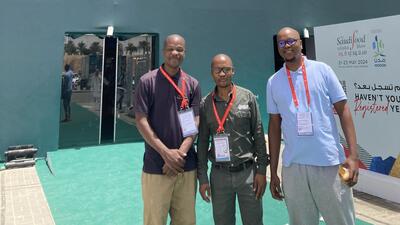Tourism as an economic tool: Shapting strategic positioning to attract tourists to least developed countries
Strategic positioning is the first thing developing countries should do when considering tourism as an economic tool. It requires the development of a carefully constructed, unique proposition that frames the attractions offered to tourists from targeted sources, communicating them in a convincing and consistent manner. High-income travellers offer particular advantages to least developed countries (LDCs) and a nuanced approach is required to attract them and to meet their needs.
In LDCs, tourism is often held aloft as a quick fix for economic ills. Bring in tourists with their dollars, euros and yuan and you open a channel, for you and your country, to hard currency that could make a real difference to the lives of millions of people. The idea is valid. The Maldives has shown what can be done to move a population out of subsistence. The trick is to commence investment in tourism from the right place; in short, to spend some time developing the unique proposition that will bring the right people to your country, the sort of people who will spend money in the local area and will not leave damaging footprints on the landscape.
At the United Nations Fourth Least Developed Countries Conference (LDC-IV) in Istanbul last May, I had the pleasure of speaking on tourism strategies with an audience of delegates at the World Export Development Forum. The delegates came from the world’s LDCs and I was tasked with describing how they can make the most of their tourism opportunities to boost their countries’ economies out of poverty.
My work at Etoile is about helping people, businesses and governments position themselves on the world stage in the most advantageous way possible, given the resources they have to hand. When my colleagues and I look at a challenge, we spend considerable time considering the geopolitical context within which the client is operating. This means looking very carefully at five things:
1. Where they have come from – the context, the journey or the story of the journey that brings them to the place they are in today
2. Where they are now
3. Where they want to be
4. How they would measure success if they got there – vital if you want to know your budgets are being properly spent
5. How we might help them get there – the strategy and campaign plan.
The goal is to find an unassailable strategic positioning, the sort of positioning that allows a country to carve out a successful tourism niche and bring the right sort of people to the market in the right numbers. If a country understands what its strategic positioning is, then it can start to communicate it to the world.
Some countries make the mistake of setting out to right all the inequalities of their history in setting tourism policy, when they should in fact concentrate on matching their best tourism assets with the best tourists. Economic success will surely follow.
Here are seven rules of thumb for the aspiring tourism minister:
1. Get your strategic positioning right. Do not try and be all things to all people. People understand what they get in Patagonia, Borneo, the Maldives and South Africa. Each of these countries has had to navigate difficult histories, but they have focused clearly on their strategic positioning to attract the right tourists.
2. Choose your market carefully. Who are you aiming to attract to your country? If you are at the beginning of your tourism journey it may be appealing to aim for quantity, but this carries risks. The mass market has an appeal, but it requires huge infrastructure investment early on and often brings with it difficult development choices.
3. Aim high. If your destination has high-quality attractions – historic, natural – then think very carefully about how to position your tourism market to appeal to the high-quality, top dollar tourist. The high-income traveller requires much less infrastructure and will leave less of a footprint on your landscape. He or she will bring the most benefits for the least investment and at the same time will create centres of excellence that you can use for training and dissemination across your industry.
4. Be unique. The high-quality traveller will be more likely to seek out a new and unique destination. You cannot just offer the same experience as your neighbours. You have to find key points of difference. What combination of characteristics makes your destination different?
5. Think carefully about your brand. Remember you do not have control of your brand; you merely have the opportunity to give it a context. This is a fundamental truth that many ignore. Your brand is not your logo, it is your reputation. Remember that your reputation is in the hands of others, but you can influence it.
6. Communicate your strategic positioning, loud and clear. Communicate mostly to the people you want to attract and influence. Use the right tools to attract your audience and remember that your audience, especially if it is of high quality, will have many sources of information about you. Some will be helpful to your cause, others will not. You have to spend time using the sort of communications media that your target is reading, to make sure the balance of opinion, on the Internet, in magazines, is in your favour and is repeating the sort of messages that support your positioning.
7. Security, security, security. The modern traveller can cope with certain levels of insecurity, but as you will have seen in Egypt recently, changes in perceived security levels have dramatic and rapid changes in travellers’ behaviour. They need to feel safe.
Clearly, the tourism body that is already doing all these things is a class above the rest; but it has plenty of other things to do as well: making sure that there are direct flights from target markets for instance; encouraging high-value travel organizations to open the market through partnerships and incentives; segmenting the market to seasons; to mention just a few avenues. But if you first truly understand your proposition – your strategic position in the global tourism market – then there is a good chance that the travellers you are hoping to attract will be able to appreciate it too… and they will want to come.






